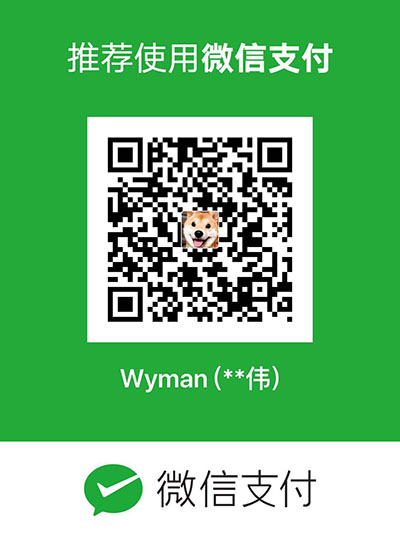There are N gas stations along a circular route, where the amount of gas at station i is gas[i].
You have a car with an unlimited gas tank and it costs cost[i] of gas to travel from station i to its next station (i+1). You begin the journey with an empty tank at one of the gas stations.
Return the starting gas station's index if you can travel around the circuit once, otherwise return -1.
Note: The solution is guaranteed to be unique.
题意:
有N个加油站,连成环形,每个加油站有gas[i]的油,从第i个加油站到第i+1个加油站需要消耗cost[i]的油。现在有一辆车,它有无限大的油箱,但是是空的。求问这辆车应该从哪个加油站出发,才可以跑一遍所有的加油站,返回该加油站的序号,如果不存在这样的起点,返回-1。
题解:
设sum-gas是所有加油站的油的总和,sum-cost是汽车走一圈消耗的油的总和,容易知道,当sum-gas<sum-cost时,汽车是不可能遍历所有加油站的,因为油不够。
反过来说,当sum-gas>=sum-cost时,是不是一定有一个起点,可以让汽车顺序跑一圈加油站呢?
证明: 1)当N=1,g1 >= c1,那么预言正确;
2)当N=2,g1 + g2 >= c1 + c2,若g1 > c1且g2 > c2,则怎么走都可以,所以只要考虑 (g1 < c1 && g2 > c2) 或者 (g1 > c1 && g2 < c2) 的情况(实际上2个情况是等同的,只要证明其一即可)。设g1 < c1,因为g1 + g2 > c1 + c2,所以g2 > c2。那么只要从g > c的点出发,必然可以到另一个点。
3)当N=3,g1 + g2 + g3 >= c1 + c2 + c3,若g1 > c1且g2 > c2且g3 > c3,则怎么走都可以。所以只需要考虑g1 < c1 && g2 + g3 > c2 + c3 的情况(g1可以换成g2或g3,因为是加油站是环形的)。设g1 < c1,那么不能以1作为起点,分情况考虑:a)当g2 > c2,那么可以从2出发,而因为g2 + g3 > c2 + c3,所以2->3->1成立;b)当g2 < c2时,g3 > c3,又可得g3 + g1 > c3 + c1,所以3->1->2成立。 所以3个加油站也必然存在一个可走的路径。
4)当N=4时,g1 + g2 + g3 + g4 >= c1 + c2 + c3 + c4,因为在3)中已经证明3个加油站必然存在一条路径,那么对于4个加油站,可以设 g1 + g2 + g3 >= c1 + c2 + c3(也可以是234、341、412),那么对于这3个加油站,肯定是有一条路的,那么久可以把这3个加油站合并,变成 g0 >= c0 且 g0 + g4 >= c0 +c4,问题就转化为2)的情况,而2)已经证明是有解的,所以综上可得,N=4也必然有解。
5) 当N>4时,通过上面的合并法,归纳得证。
所以,当sum-gas>=sum-cost时,一定有一个起点,可以让汽车顺序跑一圈加油站。
知道起点必然存在后,再利用上面的合并法,可以设起点为i,g(left)是从1到i-1所有加油站的油的总和,c(left)是从1到i-1所有加油站的开销的总和,同理g(right)是i+1到n所有加油站的油的总和,c(right)是从1+1到n所有加油站的开销的总和。那么问题就降级为3个加油站left、i、right的路径问题。因为i是起点,路径必然是i->right->left,i就可以合并到right区域里,那么路径进一步简化,变成right->left。即我们需要的i的值,同时也是right区间的起始点位置。
right和left的关系为:
g(right) >= c(right)
g(left) + g(right) >= c(left) + c(right)
区间left = [1, i - 1]
区间right = [i, n]
具体代码实现是,从1和n向中间扫,计算left和right的gas和cost,当2个指针相遇,且满足上面的关系式,则高位指针的位置就是我们的起点。
这里可以做一个优化,因为g(left) + g(right) >= c(left) + c(right),可得sum = g(left) + g(right) - ( c(left) + c(right) ) >= 0那么即是说,在扫的过程中,可以把left和right视作一个合并中加油站集群,只要保证sum>=0成立,left和right就可以不断向中间逼近,直到相遇。
"伪"代码如下:
设start = n, end = 1,sum = gas(start->end) - cost(start->end)
初始sum = gas(start) - cost(start)
while(start > end):
sum >= 0: 当sum >= 0时,因为start的gas比cost大,必然可以走到end,所以可以把把gas(end)-cost(end)加到sum里,sum += gas(end)-cost(end)(也就是把start->end的所有加油站合并,变成一个start),合并后end加1;
sum < 0: 当sum < 0时,说明start的gas已经少到不能走到end了,但又因为start必然是路径的起点,于是start还可以尝试往左挪,start减一,并执行 sum += gas(start) - cost(start)。(也就是把start的左边的加油站合并到start)
1
2
3
4
5
6
7
8
9
10
11
12
13
14
15
16
17
18
int canCompleteCircuit(vector<int> &gas, vector<int> &cost) {
int start = gas.size() - 1;
int end = 0;
int sum = gas[start] - cost[start];
while (start > end) {
if (sum >= 0) {
sum += gas[end] - cost[end];
++end;
}
else {
--start;
sum += gas[start] - cost[start];
}
}
if (sum >= 0)
return start;
return -1;
}
博主将十分感谢对本文章的任意金额的打赏^_^

